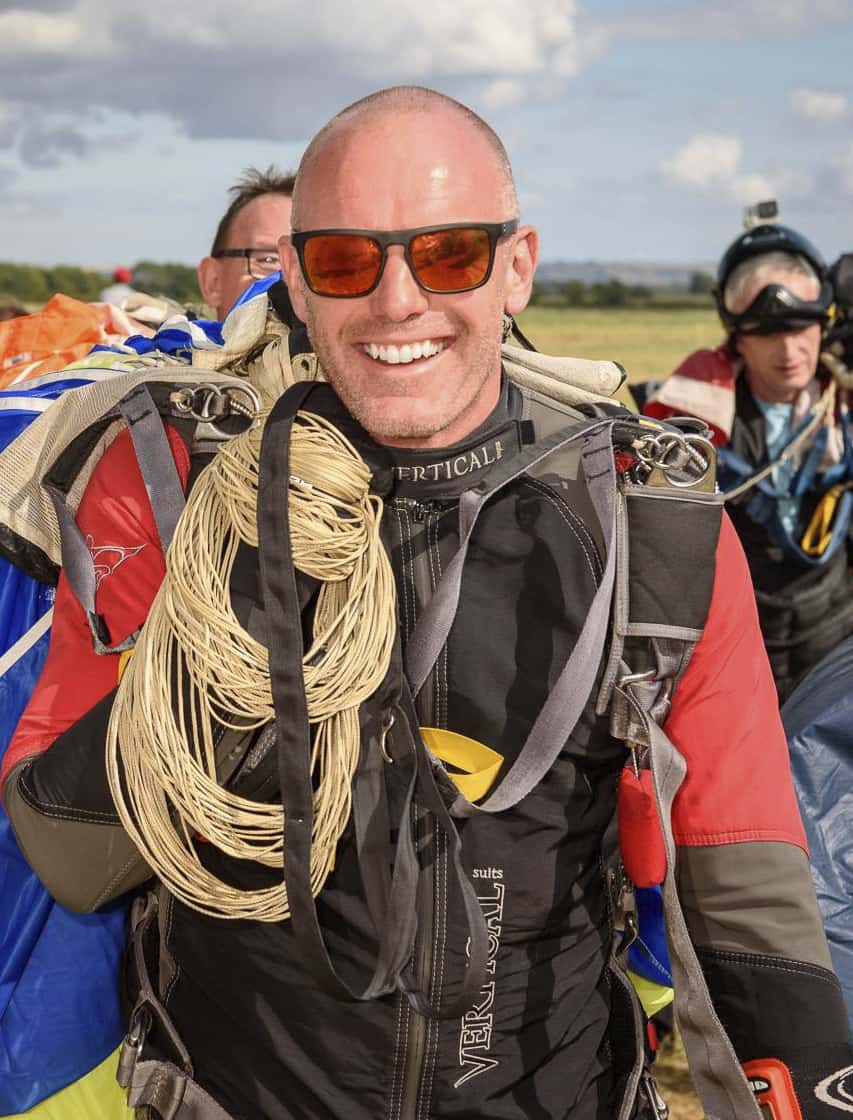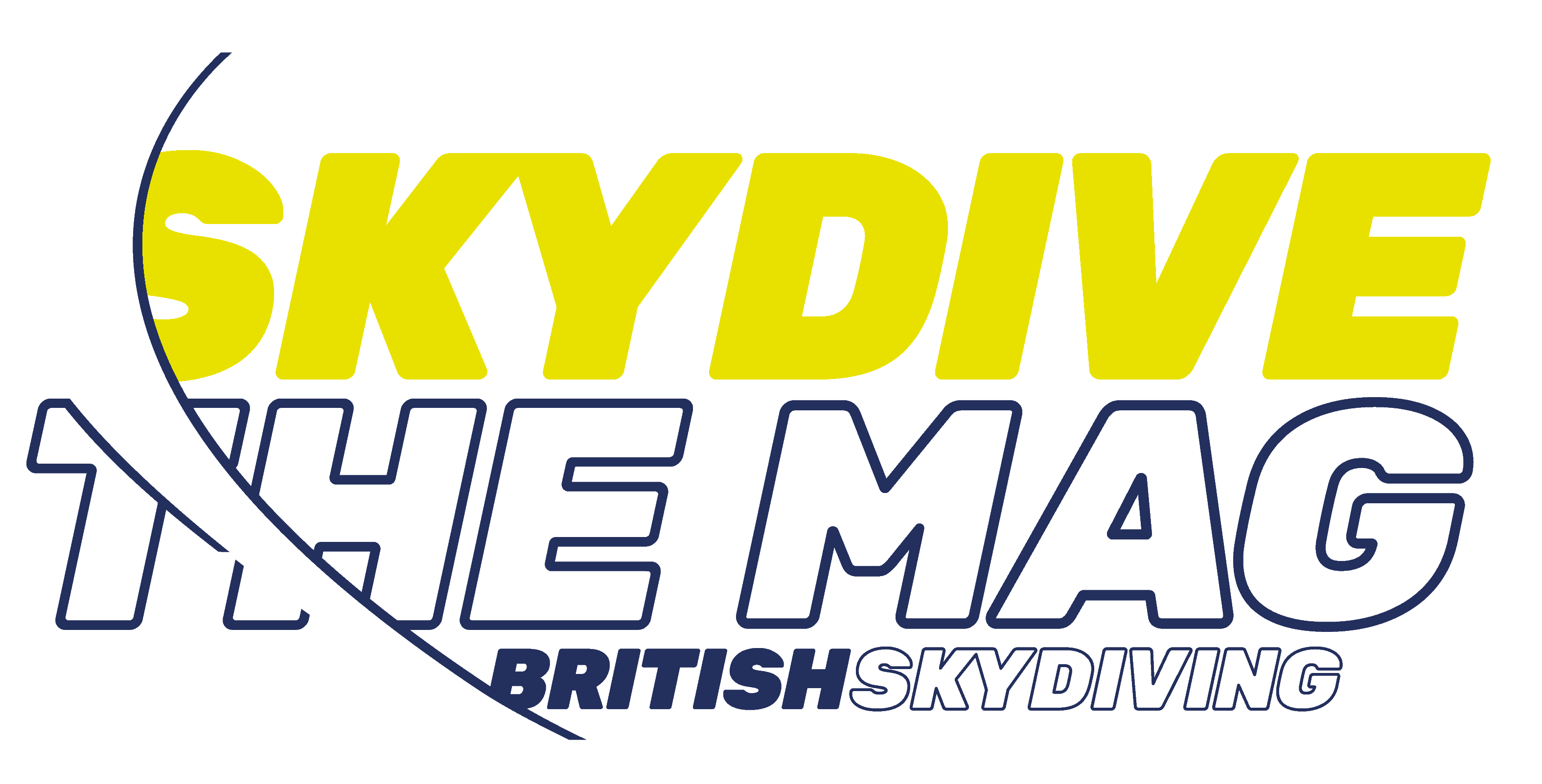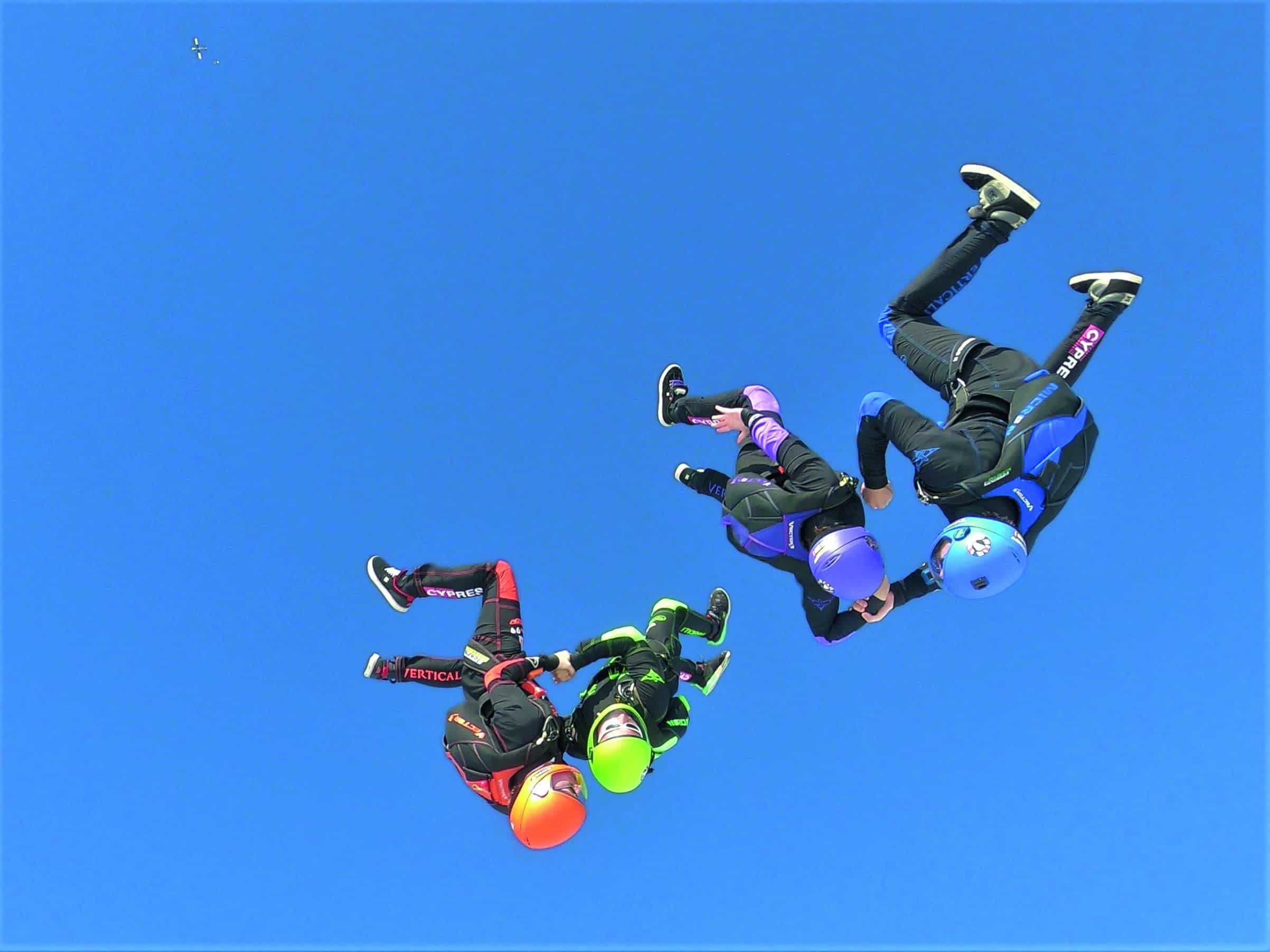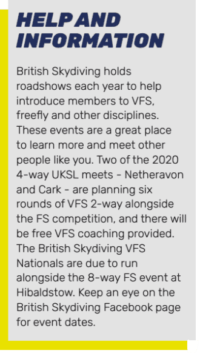I’m sold!
How do I get started?
Like almost everything in skydiving, how you approach it at the start has a big influence on your progress. A good place to start is finding a coach or experienced jumper current in VFS to show you the ropes.

Before you attempt anything in the sky, start out in the tunnel learning the basics of moving around other people, taking grips and turning pieces head up and head down. Most importantly you must learn how to keep yourself and others safe when you ‘cork’ (fall off your position) and recover.
In the early days you’ll be frustrated by getting ‘burbled’ and how difficult it seems to fly static for any length of time at head down and head up speeds. Steadily you will start to improve and before long you’ll suddenly realise that you can fly with others head up or head down. You’ll be able to take grips, perform both free and gripped transitions and those pesky burbles won’t be half as troublesome as they once were. You’ll start to get familiar with the 2-way and 4-way VFS dive pool and the hilarious mental challenge that is dirt diving VFS!

What about in the sky and progression?
Once you are starting to see some results in the tunnel it’s time to take it to the sky. Again, seek out an experienced VFS jumper or two and start small with a simple 2- or 3-way to work on the basics. It is more difficult in the sky. You are impeded by your rig and you have a lot more to think about in terms of safety and getting the exit and break-off right. Have fun and go easy on yourself if your first few attempts aren’t very successful.

With regular tunnel training and jumping you could be competing at 2-way VFS within a year of getting your FF2, and 4-way Intermediate VFS a year after that. You’ll also gain the skills required to join big-way head up and head down jumps which are super challenging and lots of fun! So, what are you waiting for? Get into VFS!
 By Matt Law
By Matt Law
 First published in the April 2020 issue of Skydive the Mag.
First published in the April 2020 issue of Skydive the Mag.
Photos:
Main Image: British National Champions, Omni 99 by Dan Guest
Mixed HU/HD by Martin Roberson
Grip-360-grip by Martin Roberson
Further Viewing: Tim Gaines is the British Skydiving VFS representative, or TEA as they are now known (Technical Excellence Adviser). You can contact him at vfstea@britishskydiving.org. Check out his Expo seminar about VFS.






